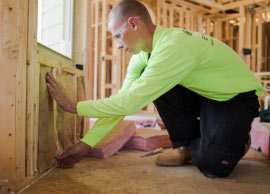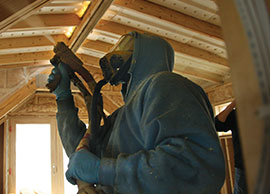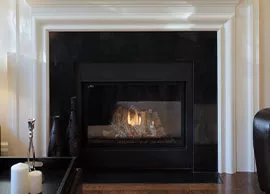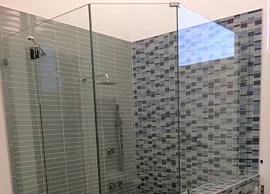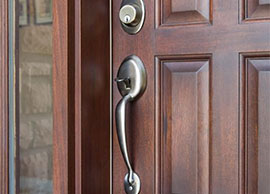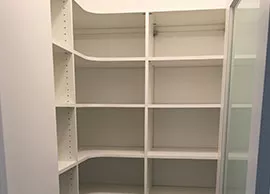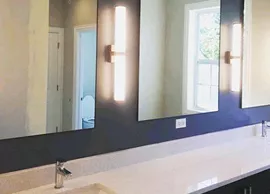Wood-burning fireplaces can be converted to gas. In this blog post, the gas fireplace experts at Therm-Con explain the conversion process and the details you should factor into your decision to convert.
Ready to Start Your Project?
Benefits of Converting to a Gas Fireplace
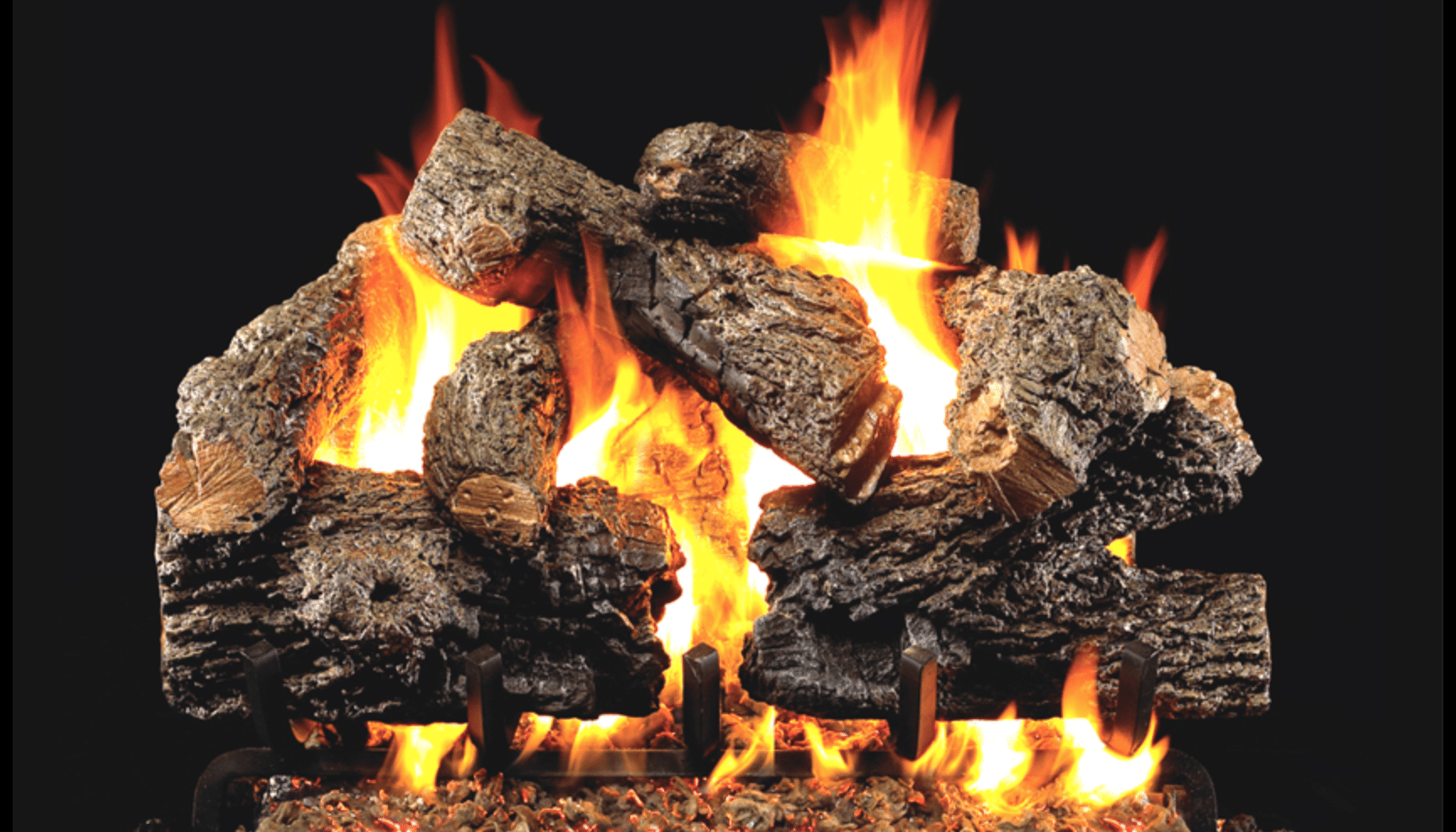
Many homeowners don’t realize that converting their fireplace is an option because they misunderstand the benefits or overestimate the cost and difficulty of converting.
Some of the advantages of converting to gas include:
- They’re more convenient and efficient than wood fireplaces.
- There’s no need to chop or store wood.
- There’s no need to clean up ash.
- There’s no need for matches, lighters, starters or kindling.
- They provide a cleaner aesthetic.
- The fire can be put out immediately.
- Remote or voice activation, deactivation and control are possible.
- They use cleaner-burning fuel.
- They’re easy to use.
What Are Your Gas Fireplace Options?
When converting to a gas fireplace, you have several options to choose from. No matter what, you’ll need to have a natural gas line installed. Considering the complexities and potential risks associated with natural gas, make sure the gas line is installed by a qualified, licensed professional.
Each type of gas fireplace has advantages when compared to the others. From chimney requirements to cost, they all have their unique benefits and should be considered against your budget, home specifications and comfort requirements.
Once you’ve determined which type is best for you, there are many styles, finishes, controls and other factors to consider.
Primary gas fireplace types to consider include:
- Direct-vent gas inserts: These require a chimney or vent. Pollutants get vented out of your living area, but so does some heat. Vented models take longer to install. The results are a more traditional look and feel. They’re more compliant with building codes, but they’re also the most expensive gas fireplace option.
- Ventless gas inserts: These don’t require vents due to more efficient burning. Minimal pollutants get released into your living area, but indoor air quality is affected as a result. More of the heat produced stays in the living space. They also tend to be less expensive than vented options.
- Gas log inserts: These can be either vented or ventless. They’re designed to look just like actual wooden logs and enhance the visual aesthetic of the fireplace. Styles are available to mimic specific types of wood, charring and even stacking.
Trust Therm-Con for All Your Fireplace Needs
At Therm-Con, our professionals have extensive training and comprehensive experience to handle your wood-to-gas fireplace conversion, from assessing your budget and requirements to selecting the right unit and installing it.
Our goal is to exceed your expectations with superior work and outstanding customer service. We’ve been installing fireplaces in Chattanooga for over four decades, so we’re your trusted choice when you install your fireplace.
To learn more about converting your wood fireplace to gas in the Chattanooga area, call Therm-Con today.

